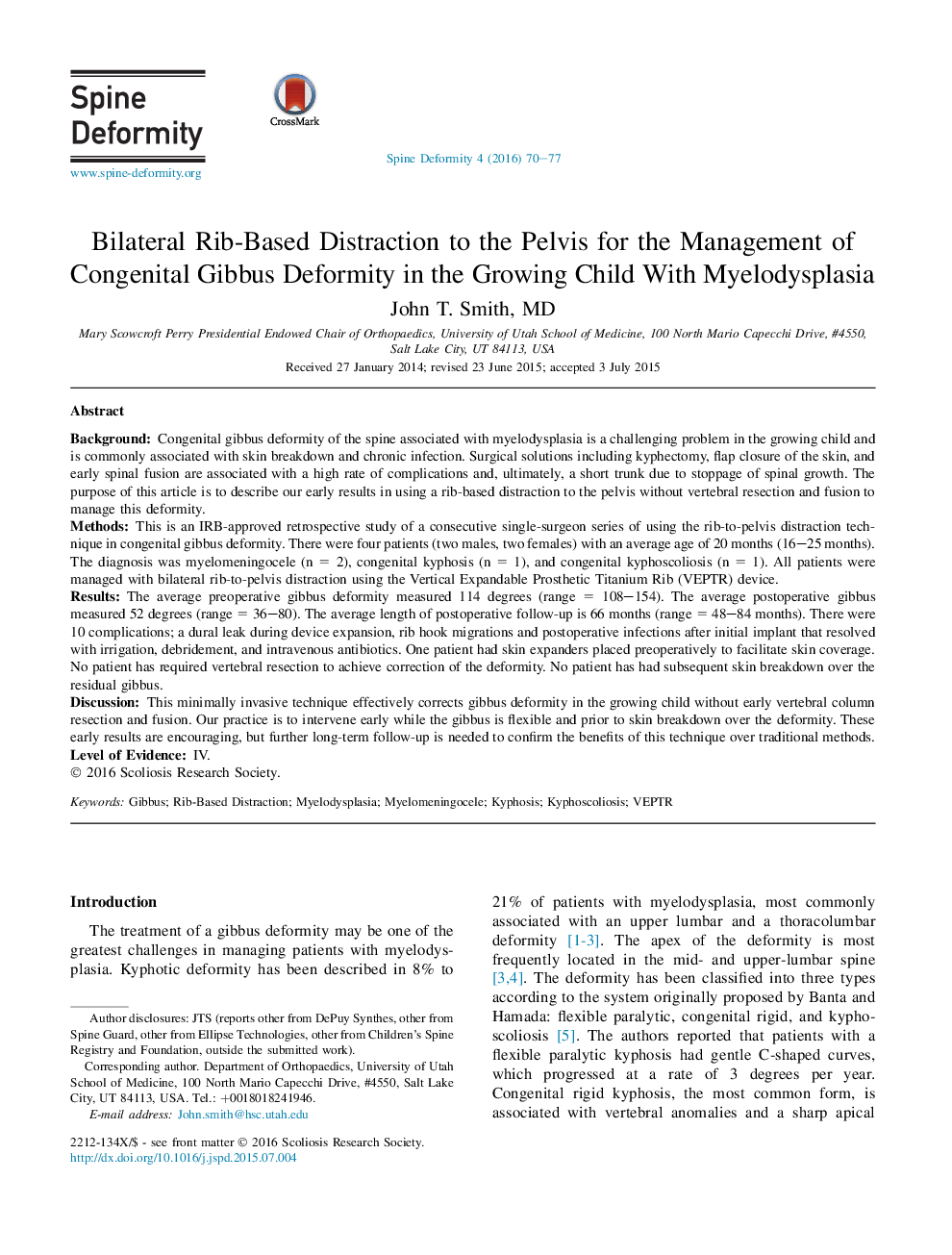| کد مقاله | کد نشریه | سال انتشار | مقاله انگلیسی | نسخه تمام متن |
|---|---|---|---|---|
| 4095488 | 1268536 | 2016 | 8 صفحه PDF | دانلود رایگان |
BackgroundCongenital gibbus deformity of the spine associated with myelodysplasia is a challenging problem in the growing child and is commonly associated with skin breakdown and chronic infection. Surgical solutions including kyphectomy, flap closure of the skin, and early spinal fusion are associated with a high rate of complications and, ultimately, a short trunk due to stoppage of spinal growth. The purpose of this article is to describe our early results in using a rib-based distraction to the pelvis without vertebral resection and fusion to manage this deformity.MethodsThis is an IRB-approved retrospective study of a consecutive single-surgeon series of using the rib-to-pelvis distraction technique in congenital gibbus deformity. There were four patients (two males, two females) with an average age of 20 months (16–25 months). The diagnosis was myelomeningocele (n = 2), congenital kyphosis (n = 1), and congenital kyphoscoliosis (n = 1). All patients were managed with bilateral rib-to-pelvis distraction using the Vertical Expandable Prosthetic Titanium Rib (VEPTR) device.ResultsThe average preoperative gibbus deformity measured 114 degrees (range = 108–154). The average postoperative gibbus measured 52 degrees (range = 36–80). The average length of postoperative follow-up is 66 months (range = 48–84 months). There were 10 complications; a dural leak during device expansion, rib hook migrations and postoperative infections after initial implant that resolved with irrigation, debridement, and intravenous antibiotics. One patient had skin expanders placed preoperatively to facilitate skin coverage. No patient has required vertebral resection to achieve correction of the deformity. No patient has had subsequent skin breakdown over the residual gibbus.DiscussionThis minimally invasive technique effectively corrects gibbus deformity in the growing child without early vertebral column resection and fusion. Our practice is to intervene early while the gibbus is flexible and prior to skin breakdown over the deformity. These early results are encouraging, but further long-term follow-up is needed to confirm the benefits of this technique over traditional methods.Level of EvidenceIV.
Journal: Spine Deformity - Volume 4, Issue 1, January 2016, Pages 70–77
